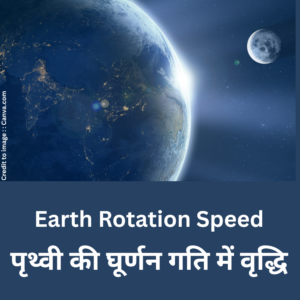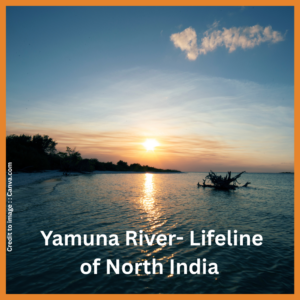The Brahmaputra River stands among the most powerful and majestic rivers on Earth. Having a crucial ecological and cultural lifeline flowing through Tibet (China), India, and Bangladesh. Known for its extraordinary width, massive water discharge, and seasonal flooding, the river supports diverse ecosystems, agriculture, hydroelectric projects, and millions of lives. This article explores the scientific features, climate relevance, biodiversity, and regional significance of the Brahmaputra River.
Introduction: The Mighty Brahmaputra River
The Brahmaputra River—known as Yarlung Tsangpo in Tibet, Siang/Dihang in Arunachal Pradesh, and Jamuna in Bangladesh—is one of Asia’s most significant transboundary rivers. Stretching over 2,900 kilometers, it plays a crucial role in agriculture, ecology, water supply, flood control, and regional culture across three nations.
Origin and Course of the Brahmaputra River
The origin of Brahmaputra River is Angsi Glacier near Mount Kailash in Tibet . Flowing eastward through the Tibetan Plateau as Yarlung Tsangpo. It takes a dramatic U-turn at the “Great Bend” before entering Arunachal Pradesh in India and merging with the Ganges in Bangladesh. Great bend of Brahmaputra river to form the world’s largest delta known as the Sundarbans Delta.
Table 1: Basic Geographical Data of Brahmaputra River
| Feature | Description |
| Origin | Angsi Glacier, Tibet |
| Length | ~2,900 km |
| Countries | China, India, Bangladesh |
| Major Tributaries in India | Tributaries i.e. Subansiri, Manas, Lohit, Dibang, Teesta |
| States Covered (India) | Arunachal Pradesh, Assam, West Bengal |
| River Mouth | Bay of Bengal (via Meghna) |
Scientific Data Table: Brahmaputra River Characteristics
| Parameter | Value / Description |
| Average Discharge (Bangladesh) | ~19,300 m³/s |
| Maximum Width | Up to 16 km (during monsoon in Assam) |
| Basin Area | ~651,334 sq. km |
| Sediment Load | ~735 million tons/year |
| Rainfall in Basin | 1,500 to 6,000 mm/year |
| Glacier-fed or Rain-fed | Both (Perennial) |
Brahmaputra River and Biodiversity
The Brahmaputra River basin is a biodiversity hotspot. The surrounding floodplains, wetlands, and forests range is a home for 700 fish species, 500+ bird species and 150+ mammal species. Some of the notable wildlife includes:
Gangetic River Dolphin (Platanista gangetica)
One-horned Rhinoceros
Asian Elephant
Hoolock Gibbon
Royal Bengal Tiger (in Sundarbans Delta)
Table 2: Key Biodiversity Zones Along the River
| Biodiversity Zone | State/Country | Key Species |
| Kaziranga National Park | Assam, India | Rhino, Elephants, Swamp Deer |
| Dibru-Saikhowa Biosphere | Assam, India | Gangetic Dolphins, Birds |
| Sundarbans Mangrove Delta | India & Bangladesh | Royal Bengal Tiger, Crocodiles |
| Nameri National Park (India ) | Situated in Assam, India | Key species i.e. Hornbills, Wild Boars |
Role in Climate, Water Cycle & Flooding
The River significantly influences the climate and water cycle in Eastern India and Bangladesh. Its vast basin regulates monsoon floods and supports groundwater recharge. However, due to glacial melting and intense rainfall, the river often causes devastating floods during the monsoon.
✔ Climate-Related Roles:
Rainfall Redistribution: Encourages monsoon patterns
Floodplain Rejuvenation: Recharges nutrients in agricultural lands
Wetland Ecosystem Support: Acts as a reservoir for climate-resilient species
Climate or weather Patterns in Brahmaputra Basin :Table 3:
| Season | River Behavior | Ecological Impact |
| Monsoon (Jun–Sep) | June to Sep is High flow, floods time | Ecological impacts : Wetlands expand, supports rice farming |
| Winter (Nov–Feb) | Low flow, navigable river routes | Ideal for migratory birds |
| Summer (Mar–May) | Moderate flow, snowmelt begins | Fish spawning, agri irrigation |
Sustainable Development Goals (SDGs) of Brahmaputra River :
The River directly supports the following UN SDGs:
| SDG Number | Goal | Contribution of Brahmaputra River |
| a. SDG 6 | Clean Water & Sanitation Goals, | Major contribution in Drinking, irrigation, hydroelectricity |
| b. SDG 13 | Climate Action | Carbon sink (via wetlands), flood control |
| c. SDG 15 | Life on Land | Biodiversity conservation |
| d. SDG 2 | Zero Hunger | Fertile land for agriculture |
❓ FAQs :Frequently Asked Questions:
Q1. Where does the Brahmaputra River originate?
Answer: Brahmaputra river originates from “Angsi Glacier in the Tibetan Himalayas” , Famous due to Sundarbans delta. .
Q2. Why is the Brahmaputra River prone to flooding, Explore reason ?
Answer: Due to its high monsoon rainfall, glacier melt, and low-lying floodplains, it causes regular seasonal floods, especially in Assam.
Q3. Write the name of the major tributaries of the Brahmaputra River in India?
Answer: Major tributaries of Brahmaputra river are Subansiri, Lohit, Dibang, Manas, and Teesta.
Q4. Is the Brahmaputra River navigable?
Answer: Yes, it is navigable in many parts, particularly in Assam and Bangladesh, supporting inland water transport.
Q5. What is the ecological importance of the Brahmaputra River?
Answer: It is home to rare and endangered species, supports wetlands, and enhances biodiversity in its ecosystem.
✍️ Summary
The Brahmaputra River is a cultural heritage, ecological marvel, and economic lifeline, lifeline of biodiversity , home for wild life . From supporting agriculture to sustaining wildlife, this river flows with vitality and vulnerability. In the era of climate change, sustainable management and conservation of the River basin are crucial for the future of South Asia.
📚 References
- India Water Portal – https://www.indiawaterportal.org
- International Rivers – https://www.internationalrivers.org
- WWF Report on Brahmaputra Basin – https://wwfindia.org
- Central Water Commission, India
- UNEP Biodiversity Assessment 2024
- IPCC Reports on Glacial Melt in the Eastern Himalayas (2023)
PRAKRITI DARSHAN-NATURE AND ENVIRONMENT MAGAZINE
Prakriti Darshan is a leading Hindi-language magazine and digital platform dedicated to raising public awareness on vital issues related to nature, biodiversity, climate change, sustainable development, and environmental conservation. This magazine represents a unique blend of science, society, and sensitivity—offering a common platform for researchers, students, NGOs, policymakers, nature lovers, and conscious citizens alike.
With thought-provoking articles, inspiring stories, environmental research, impactful projects, and policy perspectives, Prakriti Darshan is a transformative journey toward a greener and more sustainable future.
Let us come together to protect and preserve our planet for generations to come. 🌿🌍
Join us in our mission to protect and celebrate the planet. 🌏💚
Click for more information
- Visit www.prakritidarshan.com for Free Magazine ,Free membership benefits ,offered price magazine @ Rs.1 or Rs.11 only and more ……
- 🎗️Sponsor Prakriti Darshan Magazine – Support our environment mission.
- 📚 Explore the Environment Magazine – Read our latest and past issues.
- ✍️ Read Editor’s Article or Blog – Insightful thoughts from our editorial desk.
- 🌱 Join Membership – Be part of India’s leading green community.
- 🤝 Become an NGO Impact Story Partner – Share your grassroots impact nationwide.
- 🏢 Become a Company Partner – Showcase your CSR, ESG, or sustainability work.
- 👤 Become an Individual Partner – Volunteer, write, and raise your green voice.
- 📢 Advertise with Us – Reach eco-conscious readers across India.
- Eco Trails Newsletter
- Donate for “Hari Ho Vashundhara & Har school Hariyali “ Plantation campaign Associated Partner NGO :GDSS NGO www.gdssngo.org
BALA DATT SHARMA,
MANAGING EDITOR ,
PRAKRITI DARSHAN-NATURE AND ENVIRONMENT MAGAZINE
- Yamuna River- Lifeline of North India :A Scientific, Agricultural, and Environmental Perspective - July 14, 2025
- Jurassic World Rebirth Breaks Box Office Records : Global Box Office Revenue $1.5 Billion (And rising) Globally with a Roaring Environmental Message - July 14, 2025
- African Elephant: Facts, Types, Scientific Data, and Why Their Survival Matters for Our Planet - July 13, 2025







